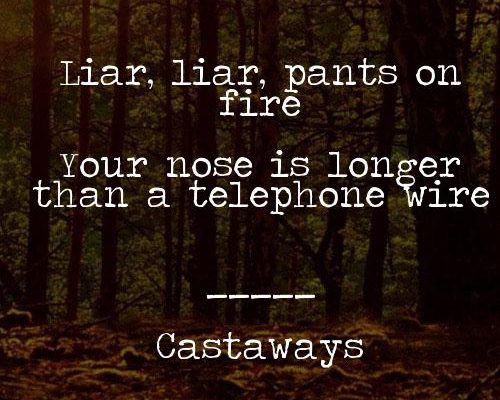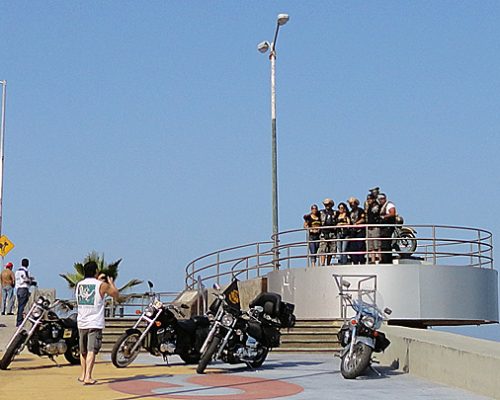One reason we chose Mazatlán as our home in México was because we weren’t fluent in Spanish. We knew it would take time to learn and that until we achieved more fluency we’d be more comfortable in a place with some English speakers. We knew we’d want English speaking friends and a bit of a safety net. While we don’t for a second regret our choice of Mazatlán, the quantity of English speakers here means that we aren’t living immersed in the Spanish language, which is of course the optimal way to learn.
We’ve taken classes and learned a lot – and Paul even went to Guadalajara for two weeks of language immersion a couple of years ago. (He wrote about it, here.) But since then he didn’t feel he’d been making enough progress, especially with his comprehension. He had the bad habit of getting stalled when someone spoke a word he didn’t know – instead of sliding past and trying to get the whole of the conversation between context and his own vocabulary. He knew it would be hard to progress further here in Mazatlán, especially as so many Mexicans have returned after living in the US, bringing with them their perfect English.
Paul is a fantastic researcher, and he decided to attend the Spanish Institute of Puebla. They offer a 3 week program which includes 6 hours of classes five days a week and excursions to various historic sites in the area. The Spanish Institute also strongly encourages students to stay with a Mexican family while attending school, and they can set the stay up for you.
Paul flew to Mexico City and took a bus to Puebla. He was picked up in Puebla by his host family, Antonia and Ricardo. They live in an older home in Centro, just a few blocks from the school. He had nice room (with a desk, of course!) and a private bath. Antonia made breakfast and dinner, but for lunch he and the other students went to a comida economica near the school.
On his first day his hosts showed him the way to school, which was about an 8 block walk from their house and close to the zócalo. After registration and orientation he signed a pledge to speak only Spanish while at the school or involved in school activities. His placement test was evaluated and he was placed in an “Intermediate 1” level class, which pushed him pretty hard but was manageable. The main emphasis of the class was the various uses of subjunctive. His teacher, Miriam, was very patient and positive. Classroom instruction was four hours daily, and the curriculum was quite varied, making use of movies, lectures, discussions, and lots of grammar exercises. The school has a computer lab with about a dozen computers and they were available to check your mail or to help you with your coursework. There was a large library of books, cd’s, and movies. Paul also had a couple of hours of homework to complete every night.
After a break for lunch each student met individually with a guide for two hours of conversation. Depending on your interests, you and your guide might visit churches, museums, parks, or sit in a cafe and talk. Paul and his even went to an amazingly huge shopping mall. The first week Paul was there he and his guide walked so much that his feet were sore at the end of the day!
Some Spanish Institute students were studying on fellowships. Some were Spanish teachers improving their skills, and there was an ESL immersion teacher who wanted to experience the immersion process firsthand, and more. One student had been there for six months – came to the school without any Spanish and was graduating at a near fluent level. Paul is pleased with his progress. He has improved his comprehension and feels capable of conversing without anxiety. I am so happy for him, and if it hadn’t been so hard to be apart for three weeks I’d consider going myself. Paul is glad that he chose this school – the multi-disciplinary approach with movies, conversation, grammar, homework, music, and home stay all combined to give him what he needed to make the progress he’d been wanting.

On the weekends there was usually an excursion – Paul enjoyed them both. The first was a visit to Cholula, stopping along the way to visit points of interest and culminating with the spectacular view of the Spanish church on top of the grassy mountain that – unknown to the Spaniards – was the Great Pyramid of Cholula. The following week they went to the pyramids at Teotihuacan, Chapultepec Park (and castle) as well as the zócalo in Mexico City.
Paul loved the city of Puebla, and he promises that we’ll go back together soon. At the top of this post is a lovely teapot that he bought there, a perfect choice since Puebla is famous for its talavera. There are more photos below, too.






Lisa Lankins
August 2, 2011Hi Nancy and Paul,
Thank you for writing this article. I love so much that you (also) love Spanish so much! Every moment I have spent in my life learning to speak Spanish or another language has been precious to me. I don’t know why I have this love for language, but I do. It is so nice to read about someone else with this passion. I have never been to Pueblaor Cholola, but now want to go. Actually, the Spanish built churches over many “religious sites” valued by the the Aztecs and Mayans in an attempt to overpower their religious beliefs. Even in Mexico City, On December 17th, 1760 the Aztec Calendar was discovered, buried in the “Zocalo” (the main square), near the National Cathedral. Also there is the “Plaza de tres culturas” (plaza of three cultures) where a pyramid and church exist between modern high rise buildings.
I am looking forward to many more blog readings from you too! Thanks again for sharing your Mexican experience with us all.
Nancy
August 2, 2011Lisa, We are so envious of your fluency in Spanish, what I would give to have started younger…. I think the thing that’s funny about the church atop the pyramid in Cholula is that the Spanish didn’t realize it was a pyramid, just put it there because it was the tallest spot around. You can guarantee there will be more blog posts… I have been blogging one or more times a week for five years! That’s a lot of posts already! See ya around town…
Trish
August 2, 2011Wow! I have such admiration for anyone who can take immersion classes! I’ve thought of doing it for a week a year but I don’t think that would be enough to make a difference! I have to find some way to have to use spanish more in my every day life! Of course, spending 3 months away and not using it at all doesn’t help at all . . . takes me a month or more to get back on track when I get back! Well done, Paul!!
Midori
August 3, 2011Thanks for sharing the immersion experience. I have been reading your blog for a long time, but haven’t posted much. We stay in Mexico part of winters and thought about the immersion classes, but haven’t had the guts to dive into it yet. This is very motivating story!
Trinidad Garcia
August 3, 2011Great Post Nancy! I had heard of the emmersion classes but didn’t know much about them. Glad to hear Paul was able to learn more spanish and feel more comfortable speaking the language. Even though I speak Spanish fairly well, I could still learn a thing or two more about the language.
My heart and stomach twisted when I saw the church on top of the pyramid. I absolutely love history and archoeology and to see another site underneath a building makes me sad. I recently did some research on the Aztec or Mexica people to learn a little more about them and realized that we know so little about them because everthing is underneath us. Unlike the Mayan ruins, most of the Aztec’s culture, life and buildings is unreachable to us and I wish we knew more.
Thanks for sharing your photos I enjoyed looking at them very much 🙂 When I went to Mexico city I climbed the Pyramid of the Sun and was so tired but it was totally worth it.
Contessa
August 3, 2011Well done Paul! Good for you for just doing it. I was already impressed with you Spanish! Can hardly wait to see you both in November. The teapot was a perfect momento of the experience. Is it rude to ask the price of the 3 week project?
Felipe Zapata
August 3, 2011I don’t believe immersion classes do much of anything apart from giving the student a nice vacation in a Latin land, which ain’t bad, of course.
Some folks definitely have more of a knack for languages than others, lucky them. After 11 years in Mexico, and being married to a English-challenged Mexican, I speak Spanish almost exclusively all day long. I spoke no Spanish when I moved south, none. I can now communicate most anything necessary. It’s understanding other people that’s the problem. A minority (the clear speakers like President Calderón) I understand totally. In the great middle are the people I understand most of the time. Another minority (primarily the poorly educated) I can hardly understand at all. Their Spanish is lousy, pure and simple.
Speaking Spanish improves the Mexico experience immensely. Not easy though.
Lisa
August 3, 2011@Felipe, congratulations on learning Spanish! But I dont know how you can say immersion doesn’t work, when you went on to say you immersed yourself and learned Spanish. haha.
Fluency, means you can understand people too. All countries, even the U.S., have many dialects. Of course there will always be different dialects we, as non-native speakers, will have difficulty understanding. It isn’t only about lack of education. The under-educated will use more slang for sure, and also their local dialect which includes things like dropping letters, etc. To quote the Desederata, “escucha a los demás, incluso al torpe e ignorante, también ellos tienen su propia historia” (listen to all people, even the slow or ignorante, for they too have their story). I hope we as bi-lingual people can do all that is possible to understand eachother and to promote language education.
Nancy
August 3, 2011Trish, I don’t think a week would really be enough, but we are all different learners, so who knows. It would be great if you could watch some Spanish tv or something while you’re away this summer, would that be possible?
Midori, Thanks so much for commenting. It does take a bit of guts to jump into the learning experience so fully, but it seems to work. Where do you spend your winters?
Trinidad, I love your always enthusiastic voice, thanks for commenting. I think we can all learn more, that’s a great attitude. I had to nag a bit to get Paul to take pictures for me, I wanted to see the city and where he visited. He would have rather not, I think.
Contessa, That’s nice of you to say, but he needed more school to satisfy himself. I believe the school website has prices listed for various options, and then he flew round trip from Mazatlan to Mexico City.
Felipe, The classes and immersion were an excellent choice for Paul. And the immersion into a full Mexican environment worked for you, too. I think the understanding thing is true – here in Mazatlan it’s a farming/fishing area not unlike the rural South or something. The dialect is a bit hard to understand sometimes. We do much better in Guadalajara or DF.
Lisa, I love that quote, beautiful. Gracias!
judith
August 3, 2011I have such admiration for Paul for being focused on his goal and taking the big step of total immersion. I’m so glad he’s realized an improvement in his already very competent Spanish language skills. I’d be interested to know whether he finds the Mazatlecan dialect to be more difficult to understand than the dialect spoken in Puebla. So interesting to read about his experiences, thank you, although I don’t think I have the discipline required to follow his lead! And I must say that I have a bad case of teapot envy, Nancy.
Nancy
August 3, 2011Judith,
Paul tells me that yes, the Mazatlecan dialect is much harder to understand, that they speak quite clearly in Puebla. You have teapot envy, I have chocolate croissant envy, so we’re even. (Inside joke, sorry)
Contessa
August 3, 2011Not this year, because of my surgery, but hopefully next year I hope to follow in Paul’s footsteps. Three weeks sounds perfect and Colin has already given me the go ahead. Thank you Paul!!!
Nancy
August 3, 2011Contessa, That is so cool! Excellent!
Renee, Thanks so much, I think you could just say “Saludos, Paul!”
Renee Domeier
August 3, 2011Fantastic post…again!! Stunning photo. Way to go Paul! (if I could say that in Spanish, I would!!)
Paul
August 3, 2011Regarding learning by immersion: In the case of this school, they are very serious about teaching you spanish, and most students are very serious about learning. Given the motivation on the part of the students I was there with, almost all of them improved their spanish skills using this method. It certainly provided most of us more than a nice vacation.
Felipe Zapata
August 3, 2011I didn’t say immersion doesn’t work. Sure it does. Immersion CLASSES, however, as most people do them, are usually just a few brief weeks.
Kim G
August 3, 2011Hola Nancy and Paul!
I found the picture of the teapot below the word “immersion” to be quite amusing, even if it wasn’t intended to be.
Language school sounds like a terrific experience. Kudos to Paul for making the effort. One of the (sad) things I learn from reading these expat blogs that amazes me is how long people can live in Mexico without really being able to speak the language beyond the most basic tourist-speak.
One of the things I’ve found helps a lot with learning Spanish grammar is to text with a native Spanish speaker using something like Skype, AOL Instant Messenger, Yahoo Instant Messenger, etc. It gives you time to think about what’s been said (written) and look up unknown words (www.wordreference.com) before responding.
As for comprehension, I too find that the hardest part. As Felipe has noted above, it depends heavily on the education level of the speaker (at least for me), and to a lesser extent on regional accents, though I find Cubans nearly incomprehensible. (Scots too, but that’s another story.) And some people just talk way too fast to ever hope to understand.
By the way, Nancy, you have been over-the-top ethical in noting your involvement with Mexico Today. Kudos for that.
Saludos,
Kim G
Boston, MA
Where mostly our immersion comes in the form of thunderstorms. Especially this time of year.
Nancy
August 4, 2011Felipe, Our experience is that classes of a couple hours a week don’t work as well as an immersion situation like Paul just did. Everyone learns in different ways and has different goals and budgets.
Kim, Thanks for chiming in, as you point out there are so many different and good ways to improve your Spanish, what attracts one person repels another – so it’s a good thing there are so many different ways to approach it. When my son moved to Mexico in 1990 he hardly knew how to say hello and within a year he was pretty fluent and passing his college classes. How I wish I had been learning Spanish when I was young.
Ingrid
August 5, 2011Paul, congrats on the immersion course. Your commitment to learning Spanish is inspiring. Great photo of the church on top of the pyramid. Nancy, I have been so bad about doing anything Spanish but hopefully I can get back to something soon. Time is marching along and I’ll be back sounding like an idiot!
Nancy
August 7, 2011Hi Ingrid, Yes Paul is quite dedicated, I wish I could be so focused! I hope you find some time for your tapes, but if you don’t you know that the people here in Maz are so forgiving, don’t worry. See you soon!
Retired Syd
August 11, 2011Just discovered your blog from your comment over at mine. This post really hit home with me. I’ve been brushing up on my french for a recent trip to Montreal. But once there, while I could speak, I couldn’t understand much at all (for much of the same reasons as your husband.) Add to that the fact that everyone speaks perfect english (and they really don’t care which you speak, they speak both perfectly), and of course I got NO french practice.
Nancy
August 11, 2011Retired Syd, It can really be a struggle to practice if you’re in a place where many people are bilingual or want to practice your language. Good luck to you, though. Thanks for commenting!